
The Great Central Railway (GCR) is a heritage railway in Leicestershire, England, named after the company that originally built this stretch of railway. It runs for 8.25 miles (13.28 km) between the town of Loughborough and a new terminus in the north of Leicester. It has period signalling, locomotives and rolling stock.

The Watercress Line is the marketing name of the Mid-Hants Railway, a heritage railway in Hampshire, England, running 10 miles (16 km) from New Alresford to Alton where it connects to the National Rail network. The line gained its popular name in the days when it was used to transport locally grown watercress to markets in London. The railway currently operates regular scheduled services, along with dining trains, real ale trains and numerous special events throughout the year.
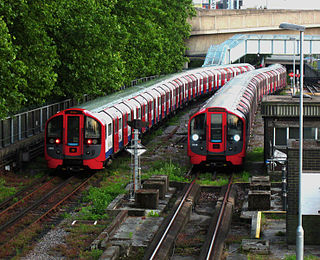
London Underground rolling stock includes the electric multiple-unit trains used on the London Underground. These come in two sizes, smaller deep-level tube trains and larger sub-surface trains of a similar size to those on British main lines, both running on standard gauge tracks. New trains are designed for the maximum number of standing passengers and for speed of access to the cars.

The Rushden, Higham and Wellingborough Railway is a heritage railway operated by the Rushden Historical Transport Society in the town of Rushden in the county of Northamptonshire, England.
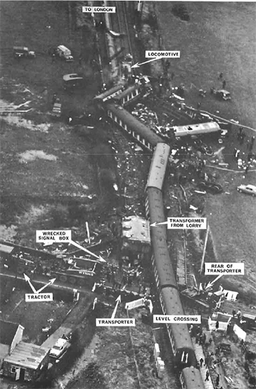
On 6 January 1968, a low-loader transporter carrying a 120-ton electrical transformer was struck by a British Rail express train on a recently installed automatic level crossing at Hixon, Staffordshire, England.

Aston railway station serves the districts of Aston and Nechells in Birmingham, England. The passenger entrance is on Lichfield Road and accessible via the staircase or lifts to take you to the platform which is raised. The station is on the Cross-City Line and the Chase Line. It is one of two local stations for Aston Villa Football Club and near to the Aston Expressway and to Gravelly Hill Interchange.
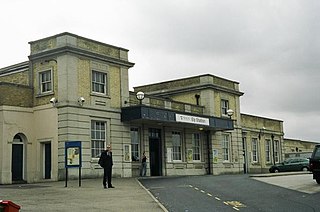
Ely railway station is on the Fen line in the east of England, serving the cathedral city of Ely, Cambridgeshire. It is 70 miles 30 chains (113.3 km) from London Liverpool Street and is situated between Waterbeach and Littleport stations on the Fen line to King's Lynn. It is an important junction for three other lines: the Ely to Peterborough Line, the Ipswich to Ely Line and the Norwich to Ely line.
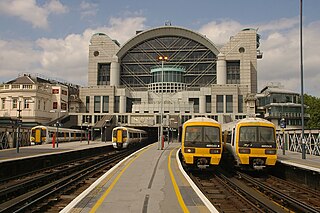
The South Eastern Main Line is a major long-distance railway route in South East England, UK, one of the three main routes crossing the county of Kent, going via Sevenoaks, Tonbridge, Ashford and Folkestone to Dover. The other routes are the Chatham Main Line which runs along the north Kent coast to Ramsgate or Dover via Chatham and High Speed 1 which runs through the centre of Kent to the coast at Folkestone where it joins the Channel Tunnel.

The South Eastern and Chatham Railway (SECR) C Class is a class of 0-6-0 steam locomotive, designed by Harry Wainwright and built between 1900 and 1908. They were designed for freight duties, although occasionally used for passenger trains. They operated over the lines of the railway in London and south-east England until the early 1960s. One example was rebuilt as an S Class saddle tank.

Over the latter years of the 19th and early years of the 20th centuries, Penistone in Yorkshire gained a name as an accident black-spot on Britain's railway network; indeed, it could be said to hold the title of the worst accident black-spot in the country. The main line through the town was the Woodhead route of the Manchester, Sheffield and Lincolnshire Railway between Sheffield Victoria and Manchester, London Road. The line was heavily graded with a summit some 400 yards inside the eastern portal of the Woodhead tunnel.
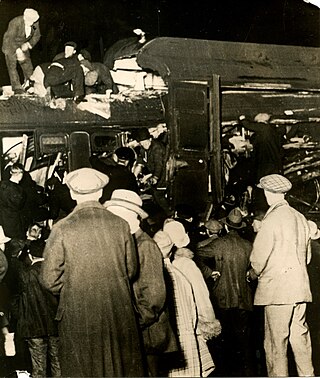
The Darlington rail accident occurred on the evening of 27 June 1928 when a parcels train and an excursion train collided head on at Darlington Bank Top railway station in County Durham, England. The accident was caused by the parcels train driver passing a signal at danger, due to misunderstanding the signalling layout in an unfamiliar part of the station. This accident resulted in the deaths of 25 people and the serious injury of 45 people.
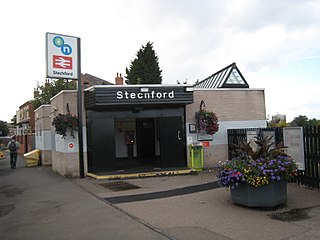
Stechford railway station serves the Stechford area of Birmingham, England on Victoria Road, just off Station Road, which is part of the A4040 Birmingham outer ring road. The station and all trains serving it are operated by West Midlands Trains. It lies at the junction between the Birmingham to Coventry line and the predominantly freight-only Stechford-Aston spur.
The Ealing rail crash was an accident on the British railway system that occurred on 19 December 1973. The 17:18 express train from London Paddington to Oxford—with approximately 650 passengers on board—was derailed while travelling at around 70 mph (110 km/h) between Ealing Broadway and West Ealing. Ten passengers were killed and 94 were injured, and it was Britain's deadliest train crash of the decade until the Moorgate tube crash which killed 45. The cause of the accident was an unsecured maintenance door that had fallen open whilst the train was travelling, after having struck several lineside objects, it struck a points machine at Longfield Avenue, derailing the entire train.
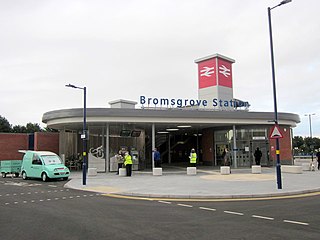
Bromsgrove railway station serves the town of Bromsgrove in Worcestershire, England. It is located at the foot of the two-mile Lickey Incline which ascends at a gradient of 1-in-37.7 towards Barnt Green on the line between Birmingham and Worcester. Bromsgrove is managed by West Midlands Railway. The current station opened on 12 July 2016, replacing an older station located slightly to the north.
Withdrawn British Rail stock is British railway coaches, wagons and locomotives that have been removed from service.
The Knowle and Dorridge rail crash was a fatal rail crash that occurred at Dorridge railway station in Warwickshire, England, on 15 August 1963. Three people died in the crash after a signalman's error routed a small freight train into the path of an express passenger train which slowed but could not stop before colliding with it.
The Chelford rail accident occurred on 22 December 1894 at Chelford railway station. The stationmaster was supervising shunting operations, during which a high-sided wagon was fly-shunted into a siding in strong winds and rapidly fading light. As another six wagons were being run onto an adjoining track, the stationmaster saw the high-sided wagon being blown out of its siding by the wind to meet them. A collision occurred derailing the runaway in such a way that it fouled the main line just as the 16:15 Manchester to Crewe express approached, drawn by two locomotives, LNWR Waterloo Class 2-4-0 No 418 Zygia and Experiment Class No 518 Express. The stationmaster ran towards them waving a red lamp but the drivers thought he was signalling to the shunters and did not reduce speed. Zygia derailed and fell on her side whilst her tender ran up the platform ramp. Express remained upright but the first carriage demolished the front of a signal box. In all, 14 passengers were killed and 48 injured.

On 26 December 1962, two trains collided near Coppenhall Junction, United Kingdom, killing 18 people and injuring 34. On that evening, cold weather and snow in and around Crewe had caused points to become frozen and trains were being detained at signals. About midway between Winsford and Crewe, the 13:30 Glasgow Central to London Euston Mid-Day Scot, hauled by an English Electric type 4 diesel, D215, with 13 coaches and 500 passengers, was stopped at a signal but the driver found the telephone to Coppenhall Junction, the next signal box ahead, out of order. Seeing the next signal ahead he decided to proceed down towards it and use the telephone there, but too fast. In the darkness he failed to notice the 16:45 express from Liverpool Lime Street to Birmingham New Street, hauled by an electric locomotive with eight coaches with 300 passengers, standing on the line ahead and collided with it at about 20 mph (32 km/h).















